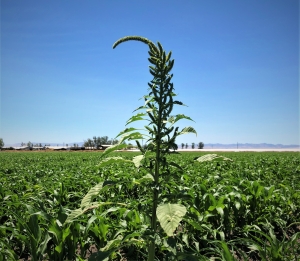What You Should Know
One of the most troublesome pigweeds for U.S. farmers has made its way to the Pacific Northwest. Palmer amaranth was recently confirmed in multiple counties across Oregon, Washington, and Idaho, including:
- Marion and Malheur counties (Oregon)
- Walla Walla and Spokane counties (Washington)
- Canyon, Cassia, Elmore, Gooding, Jerome, Minidoka, and Owyhee counties (Idaho)
On May 30, the Oregon State Weed Board voted unanimously to list Palmer amaranth as an “A-rated” weed, targeting it for early detection and containment. Though only a single plant has so far been confirmed in the Willamette Valley, the weed is capable of spreading quickly — just one plant can produce up 500,000 seeds, according to the Oregon Department of Agriculture. Once established, Palmer amaranth can reduce crop yields by more than 90% in some cases. It has also developed resistance to eight different herbicide modes of action.
From here, the ODA Noxious Weed Program will be developing a statewide management plan for Palmer amaranth. The agency will also work with Oregon State University Extension Service and local producers/landowners to survey and document the weed’s spread.
We urge OSA members to be vigilant against this noxious weed. Below, you will find resources to help identify Palmer amaranth and best management practices for native seed producers.
USDA Fact Sheet
ASTA Palmer Amaranth Strategic Plan
ASTA Best Management Practices
Anyone who suspects they have Palmer amaranth should also submit a sample for testing. There are several labs that can do this, listed below:
- National Agricultural Genotyping Center— (701) 239-1451
- SGS— (605) 692-7611
- Eurofins— (715) 629-1953
- University of Illinois Plant Clinic— (217) 333-0519
OSA will update this page with future announcements as needed.



